The Growing Acceptance of Big Cats
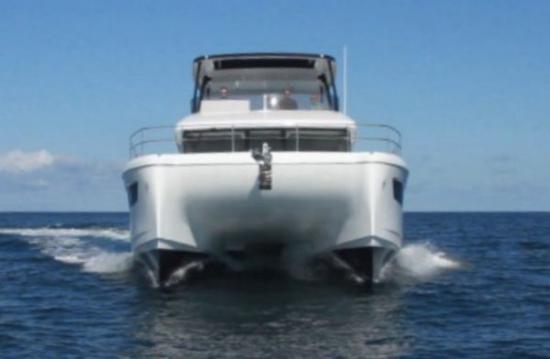
Multihulls are beginning to gain real traction in the U.S. as more and more Americans are doing research and discovering the many benefits of these designs. At the same time, catamaran designs are evolving and are solving many of the objections that traditional boaters had about them. The result of all of this is that consumers will have more choices than ever before.
Years ago, multihulls were introduced into charter fleets in the Bahamas and Caribbean. That was the first introduction most North Americans had to catamarans and over the years the number of people exposed to these has grown prodigiously. Because of their space and stability — with built-in privacy in the staterooms located in the hulls — they were a natural fit for the charter market.
At about the same time, a few power cats were introduced in the U.S. Usually, they were designed for fishing and ranged in size from about 20’ to 30’. Names such as Glacier Bay and Twin Vee where seen more and more. In the beginning they struggled to get acceptance, but over the last few years unit sales have grown, and today World Cat is the dominant name in the U.S. for this type of boats, having integrated both Glacier Bay and Carolina Cat into one large boat line.
Now, from outside North America, large power cats are being introduced, joining the growing ranks of sail cats that have been sold here for the last decade.
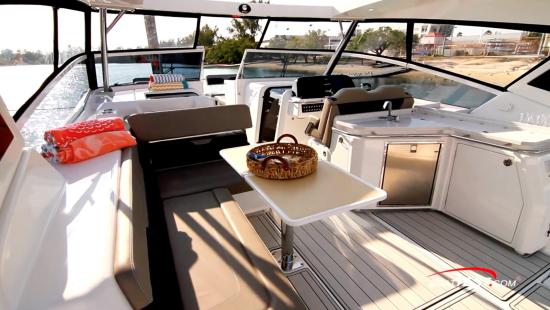
Power catamarans are not entirely new anymore, though they have been most popular in places like Australia, South Africa and Hawaii where their inherent stability and efficiency are necessities thanks to rough sea conditions and long cruising legs.
But the appeal of many multihull designs was limited. This may partly be due to the fact that many power catamarans got their start as conversions of sailing designs, with the mast cut off and equipped with somewhat larger engines. Also, the boats weren’t as efficient as they could be, largely because the design warranted exceedingly heavy construction due to the limitations of the materials even a few years ago.
For Cats: Light Is Right
“I think what’s really gone on with catamarans gets back to composites,” says Lex Raas, of Aquila Boats product development. “It was hard to build catamarans out of wood in the old days. Too much weight is the enemy of the catamaran.”
Today things seem to be much different, as many examples of both sail and power catamarans benefit from modern design and updated construction materials that make them more comfortable than ever. And the market seems to be responding as multihull builders report good sales growth year over year. But there’s more to it than that. Here are some reasons why:
Stability
When you think two hulls are better than one, your head automatically goes to stability. This is because many multihulls simply stay put in the water, even in rough conditions. The stability of catamarans makes them popular because the novice boaters on board get used to the movement, or lack of it, more easily than on some monohulls.
This is a big reason cats became popular in sailing charter, where a group of charter guests would most likely have one or two hardcore sailors aboard, and the rest would not be quite as experienced. A heeled-over monohull sailboat has limited appeal for that crew, which may be green in more ways than one.
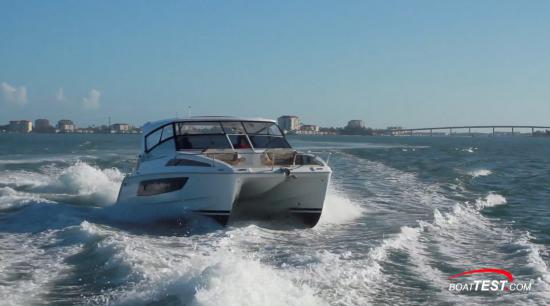
Stability is important underway, but for families looking to share time on a boat, stability at rest may be just as important. “If you want to stay overnight and anchor where there is a swell, it can really bother some people,” says Laurent Fabre of Open Ocean, who is working with Fountaine Pajot, a French boatbuilder who builds multihulls in both power and sail. “Catamarans are really stable.” Fabre points out the growth of popularity of add-on gyro stabilization systems in monohull powerboats as evidence of the importance of stability, a feature that is inherent in catamaran design.
Space
If you’ve taken a turn around the docks at a recent boat show, you’ll notice that all boats, not just multihulls, are reaping the benefits of inventive design that capitalizes on space. This means that boats are not only adding volume creatively, with inches and sometimes feet added to the beam measurement, and designs that carry that broad beam through more of the boat’s length. It also means that less of the volume is wasted.
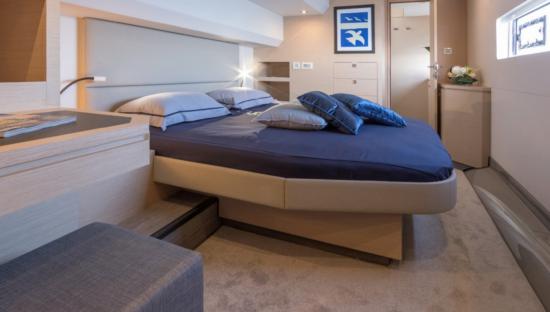
Cat Interiors Have Evolved – And, Improved
Same goes for catamarans, where once upon a time the accommodations were built within the somewhat confining structure of either the port or starboard hull. Today, catamaran builders use more volume created by the structure between the hulls. What ends up filling that newfound volume may be the head of a berth situated transversely, say, or a hanging locker or two. But the difference is this: That whole berth or those lockers don’t need to fit within the confines of the hull anymore. The resulting room freed up for open deck space in the cabin makes a big difference.
“Couples or large boat dealers who come to look at the Fountaine Pajot motoryachts at the boat show have been surprised,” Fabre says. “They step into the hull and expect the hull to be quite narrow, as they have seen on cats previously, and they say, ‘Wow,’ because the hulls are quite beamy and have good headroom.”
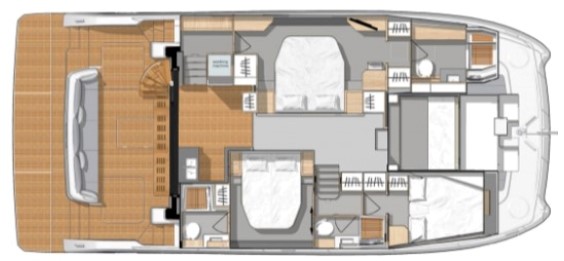
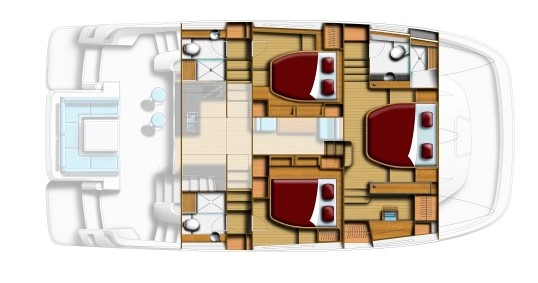
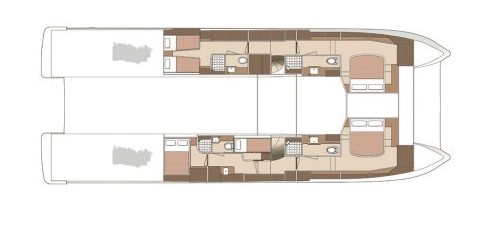
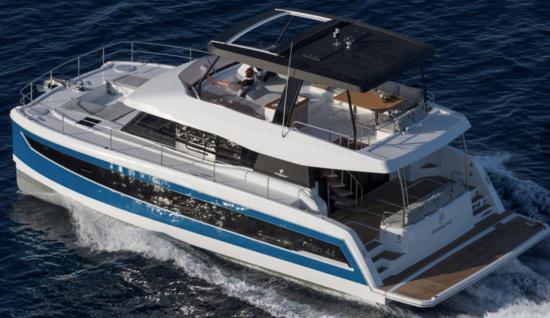
And, we haven’t even begun to discuss the social spaces from the swim platform and beach area to the cockpit to the salon, and then the flybridge. Because of the significant beam, the spaces on these yachts are substantially larger than many monohulls of similar LOA.
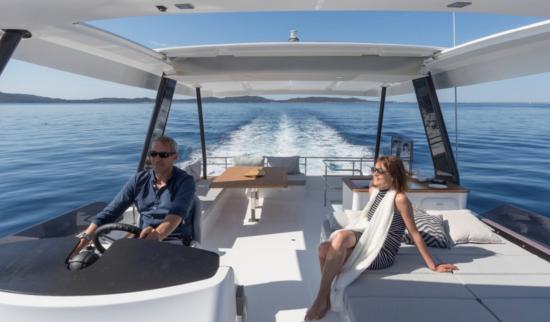
Efficiency
Amazing when you design a boat for its intended use, things just work out better. While multihulls have always been a very efficient way to get across the surface of the water by sail, now they’re being designed specifically for duty as anything from daytripping powerboats to luxurious motoryachts. The results are hulls made to work with their engines, and propulsion systems rated with enough power to move them well beyond the trawler speeds of their forebears. The best part, they can still get good speeds with relatively small engines. This is because the hulls have less wetted surface drag than a comparable monohull.
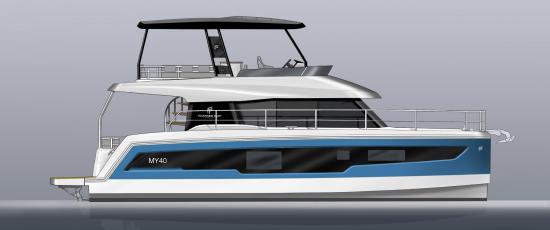
Multihull Challenges
Catamarans still face some challenges, such as a notable lack of marina infrastructure designed to handle them. Slips are too narrow for many catamaran designs, or marina owners charge premium rates for them to dock. But the builders aren’t too concerned.
“When I first entered the charter business,” Raas says, “I said to the charter operators in the Caribbean: ‘Hey are you guys going to get into sailing cats?’ And they said, ‘Nah, there’s not enough space in marinas and there’s nowhere to dock.’ And I said, ‘It’s not what you think, it’s what the customers are going to think.’ And now everyone’s operating catamarans in charter and those are the most popular.”
Raas mentioned a new 30-foot design that Aquila is working on, which takes the outboard concept first realized in the Aquila 36, and developed it in a smaller footprint.
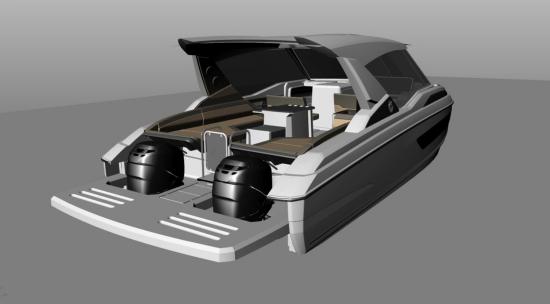
But not all catamarans are created equal. “It doesn’t mean all cats are great,” Raas says. “People need to do their homework.”
An obvious difficulty for catamaran market acceptance is, of course, that they simply look different. For many people, they “don’t look like a boat.” Certainly, they don’t look like a boat that Americans were used to until the last 10 years or so. Catamaran designers recognize this fact of life, and have worked hard recently to give cats a profile more like what one might see in a monohull. With time, and increasing numbers of cats, boaters will get used to the look.
Probably the largest challenge of all for catamarans is the inherent conservative nature of American boat owners. Simply put, they are skeptical of boat designs with which they are unfamiliar. For example, it took nearly two decades for RIBs to catch on in the U.S. after they were ubiquitous everywhere else in the world. Americans boaters tenaciously stuck with fiberglass dinghies that were heavy, easily tipped over, and dangerous – despite the nearly universal adoption of RIBs abroad.
Virtually all builders of catamarans are seeing sales grow significantly in North America these days, and the tide may well have turned here for this important and functional boat design.